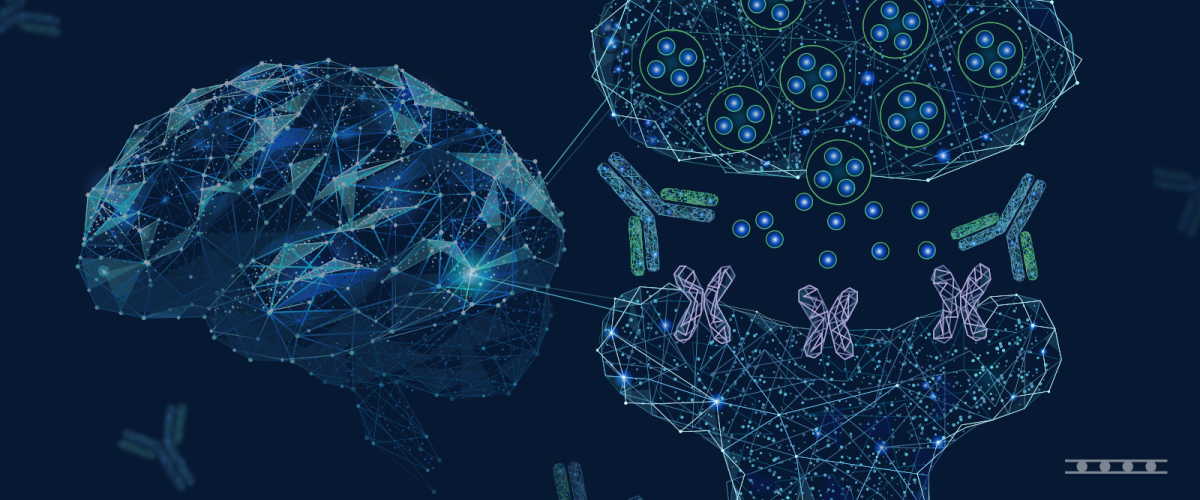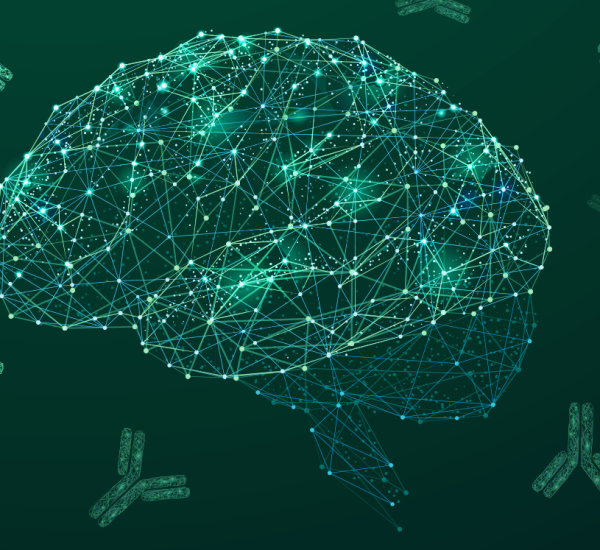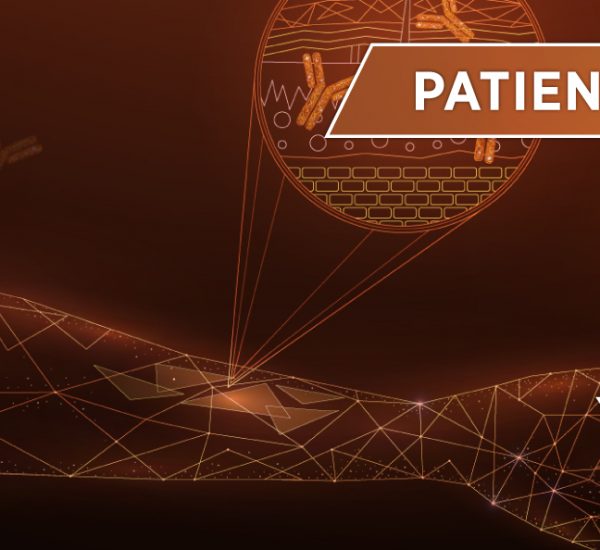Autoimmune Encephalitis Alliance | The Journey to Its Inception
Autoimmune encephalitis refers to a group of conditions that occur when the body’s immune system mistakenly attacks healthy brain cells, leading to inflammation of the brain. People with autoimmune encephalitis may exhibit various neurologic and/or psychiatric symptoms including impaired memory and cognition, abnormal movements, seizures, fear, panic attacks, psychosis etc.1 Dr. Flanagan from Mayo Clinic states that approximately 1 Million patients globally are affected from autoimmune encephalitis and that timely immunotherapy can often help patients recover and regain function 2.
Many families of patients with autoimmune encephalitis suffer in silence; without understanding the outcome of their family member’s diagnosis. However, two patient families, the “Egger’s and McDow’s” from Durham, North Carolina, aimed to change this. Both families’ journeys with autoimmune encephalitis lead to the formation one of the world’s largest organizations to support patients and advance research in the diagnosis and treatment of autoimmune encephalitis. Listen to their empowering journey that led to the formation of “Autoimmune Encephalitis Alliance” in the above interview video.
We also sat down with Caterri M. Woodrum, Executive Director and Chief Executive Officer, Autoimmune Encephalitis Alliance, Inc. to learn more about this organization and their future plans.
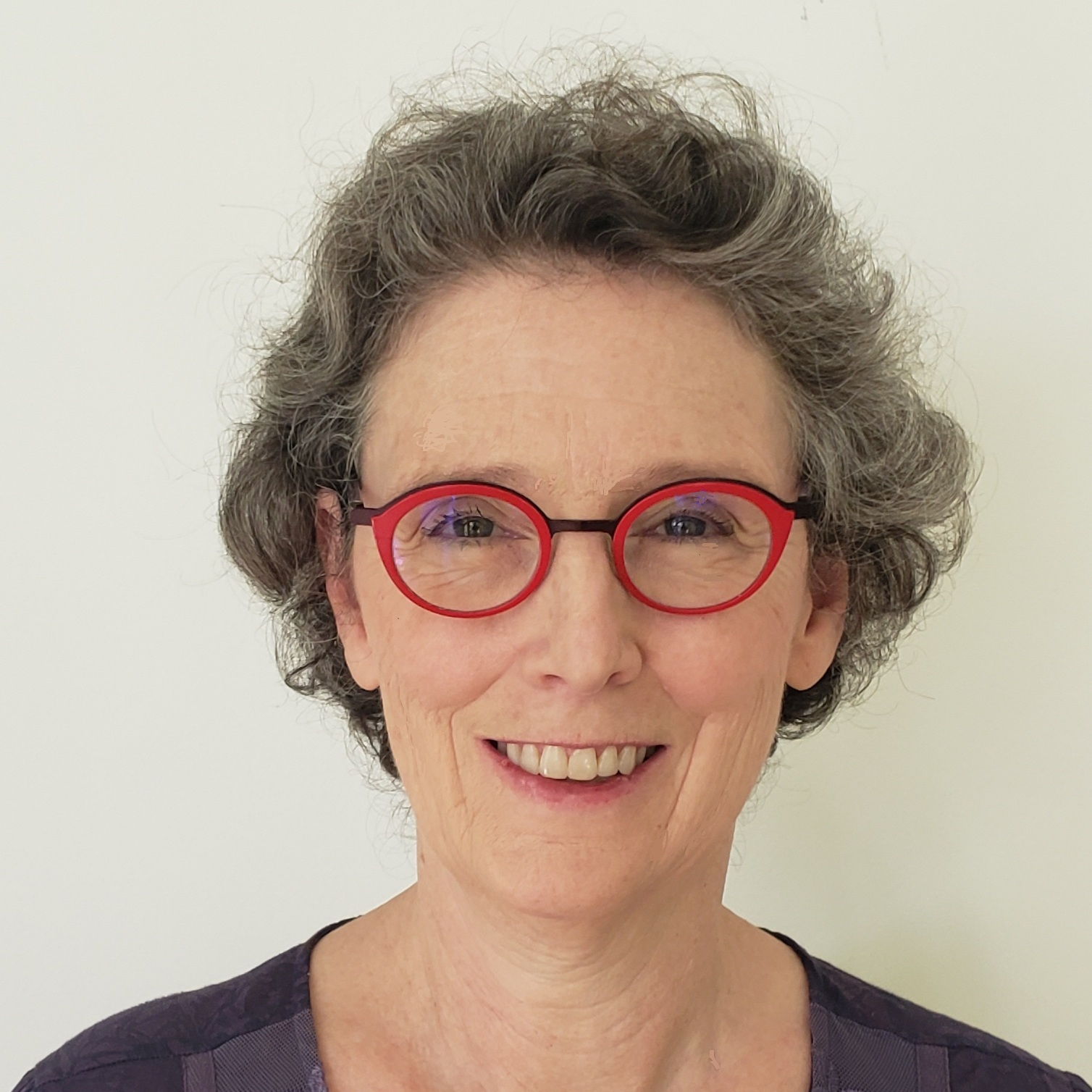
Caterri M. Woodrum
How was the “Autoimmune Encephalitis Alliance” formulated and what is its vision?
The Autoimmune Encephalitis Alliance was launched by two families affected by autoimmune encephalitis – the McDows and the Eggers.
Leslie and Will McDow’s daughter Florence first exhibited autoimmune encephalitis symptoms in 2008 as a two-year-old. After a four-year struggle that eventually included two bone marrow transplants, Florence died on March 4, 2012, at the age of six.
Helen and Daniel Egger’s son Sasha fell ill with autoimmune encephalitis in 2009, at the age of thirteen, and has been hospitalized eight times since then. Currently, Sasha is in remission.
The McDows and Eggers came together in 2012 with a shared vision of a different future for people facing autoimmune encephalitis. They envisioned a time when information and community, both powerful weapons, would be readily available to anyone suffering from this disease. They sought a future in which advanced care could lead to a cure, where collaboration between families, clinicians, and researchers serves as a model of efficiency and mutual respect, and where no family faced this disease alone.
In December of 2012, the Alliance emerged from these collaborations to help catalyze this future: to change the patient experience; to accelerate diagnosis and improve treatments, support families coping with the disease, and promote scientific and clinical research that will eventually lead to a cure. Since our inception, we have made significant progress towards this vision.
When was Autoimmune Encephalitis Alliance founded and what are its core objectives?
Founded in 2012 the AE Alliance is a 501(c)(3) non-profit organization based in Durham, North Carolina.
The Autoimmune Encephalitis (AE) Alliance strives to educate physicians in evidence-based best practices for the diagnosis and treatment of AE. Successful patient care requires a collaborative, interdisciplinary approach. The AE Alliance endeavors to establish a supportive community of patients, families and caregivers, so that no one faces autoimmune encephalitis alone. The AE Alliance works to facilitate scientific research into the causes of AE and its treatment, with confidence that a cure will be found.
How does the AE Alliance bring patients and clinicians together and what do they achieve?
The AE Alliance recognizes that clinicians play an integral part in the diagnosis, treatment and recovery of patients with autoimmune encephalitis. We’re committed to helping them partner with patients and their families by providing resources to improve high-quality care. Keyways we meet this objective:
Medical Advisory Board (MAB): The AE Alliance Medical Advisory Board (MAB) brings together internationally renowned experts in AE to allow the Alliance to provide patients, families and medical professionals with trusted, evidence-based information and practices. The goal of the MAB is to ensure the Alliance has access to the most up-to-date information on diagnosis, treatment and outcomes for AE, as well as ongoing research initiatives.
AE Alliance Community Seed Grant Program: In 2020 we launched the AE Alliance Research Network to partner with the AE community in raising funds for Research. In 2021 we inaugurated the AE Alliance Community Seed Grant Program supporting studies that have direct implications for patients with autoimmune encephalitis.
AE Clinicians Network: The AE Alliance offers an AE Clinicians Network to connect patients with doctors who have experience treating AE and to connect practicing clinicians with each other. We have over 200 physicians registered in the AE Clinicians Network.
Provider Resources: AE Alliance works closely with healthcare professionals and organizations. In addition to our Clinicians Network and Research Grant opportunities, we provide free patient materials, opportunities to collaborate on research projects, circulation of key developments for the AE community, and assistance in publishing and recruitment for clinical trials.
Provider Involvement: We welcome the support and guidance of healthcare professionals willing to offer their expertise to the AE community. Some ways that healthcare professionals are able to get involved include answering questions for the Ask Our Panel segment for our quarterly newsletter, speaking at Support Group Meetings and patient conferences, and submitting articles for AEA publications.
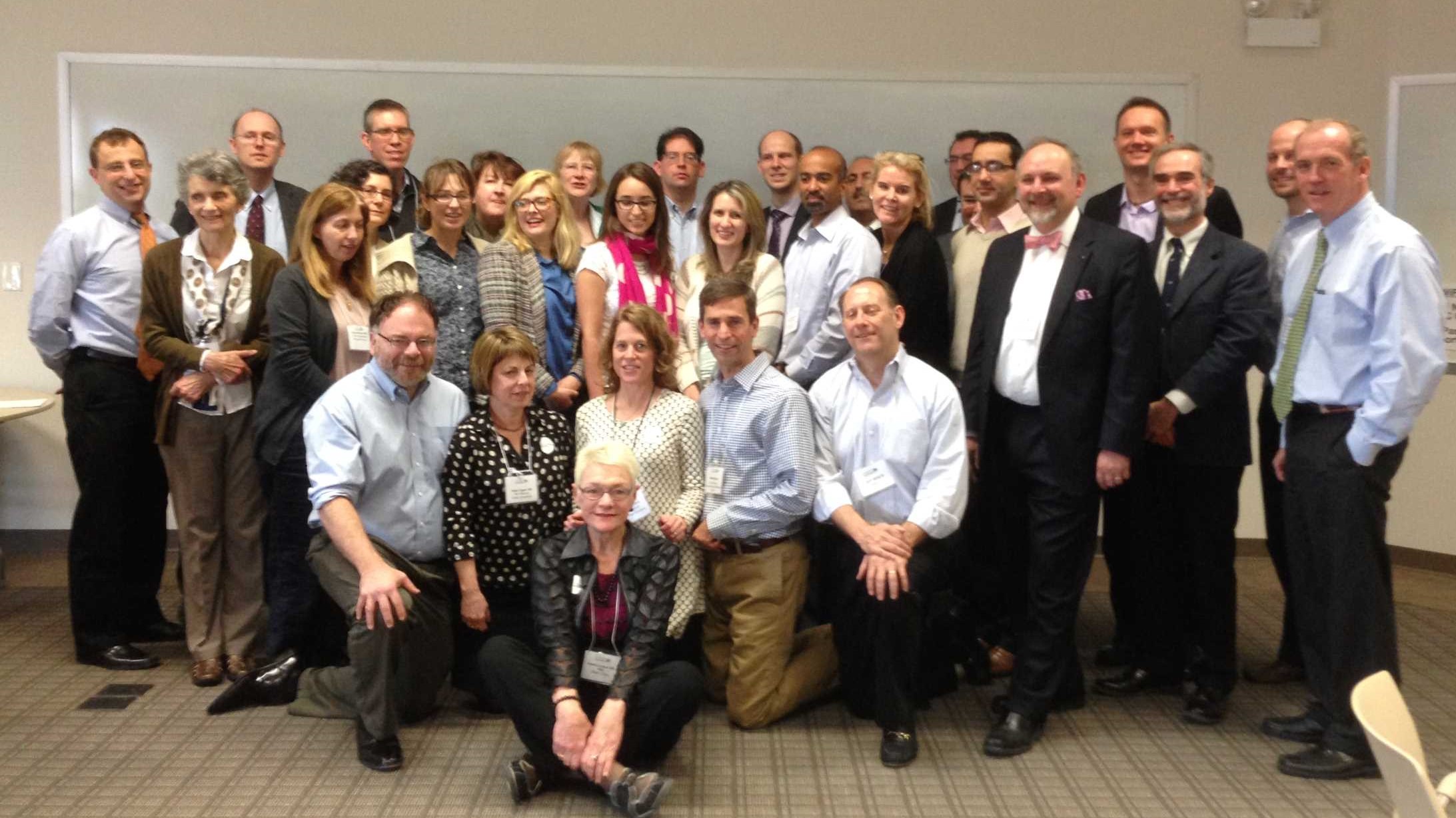
AE Alliance and Clinicians Meet
Can you briefly describe the activities conducted at AEA every year?
Patient Support: The AE Alliance operates four US geographical support groups in the North, South, Midwest, and West. AEA Support Groups bring together patients and caregivers to share personal experiences, coping strategies, and firsthand information about AE and its treatments. Support groups meet at least quarterly and can hear directly from AE experts and other healthcare professionals.
AE Alliance partnered with Smart Patients to create an online community for patients and families affected by autoimmune encephalitis. It’s a great way to connect with others on a similar journey in a safe, welcoming online environment.
The AE Clinicians Network connects families, patients and medical professionals with clinicians who have experience diagnosing, treating, and caring for autoimmune encephalitis.
Living with AE: A diagnosis of AE can be devastating and the journey through diagnosis, treatment and recovery can be long and difficult. Good nutrition, exercise, naturopathic and complementary therapies are all vital tools to help an AE survivor build supportive habits to live healthy lives. The AE Alliance offers a series of programs designed specifically to support the AE patient or caregiver during this stage of the journey. Programs include health coaching (the Refuel You program), workshops and tools to help with stress management, diet, and exercise, and a Recovery Toolkit for download from our website.
Events: Annually the AE Alliance holds an AE Alliance Family Day offering updates from key experts in the field, workshops, and patient or caregiver testimonials about the disease. The AE Alliance also partners with other key organizations in the AE field in an annual World Encephalitis Day Alliance conference for patients and caregivers. The AE Alliance also holds the annual Florence Forth Road Race each year in March in both an in-person forum in Durham, NC and a virtual race to raise funds and awareness of the disease.

Florence Forth Road Race

EUROIMMUN and AE Alliance at Family Meet
Where do you want AE Alliance to be in 10 years?
The AE Alliance hopes to play an integral role in helping the medical and patient community address each of these key opportunities over the next ten years:
As we look to the future, it is essential to examine current impediments to improved patient care and recovery. Though any disease takes a toll on its patient community, AE patients are presented with challenges unique to rare disease including:
- The financial burden of AE on those diagnosed with the condition is not only substantial but often misunderstood even within the medical community. Patients frequently struggle to find local physicians familiar with the disease, much less able to treat it. More than 95% of rare disease patients lack an FDA-approved treatment for their condition, and AE is no different. In the absence of insurance coverage, the high out-of-pocket cost of some of these drugs can impede access for the AE patient.
Goal: Not only is it important to address the affordability of medicines and other medically necessary treatments for AE, but it is also imperative that we work toward insurance reforms to alleviate the burden placed on our patient community.
- An estimated 55% of AE patients are admitted to intensive care units in the US and require significant inpatient health care resources. Those admitted to the ICU account for a substantially higher financial burden on hospitals than those non-ICU admitted patients.
Goal: There is a need to develop novel diagnostic and therapeutic modalities to improve patient outcomes and decrease hospital burden in AE.
- Unlike many diseases that have developed comprehensive frameworks of institutional support, expertise, funding, and research partnership, AE is in the early stages of building a disease management and research infrastructure.
Goal: Investment in communication and partnership platforms to develop multi-institutional collaboration that catapult disease diagnosis, treatment, and recovery protocols.
An important goal is also to develop a comprehensive patient registry from which to build a natural history study. A natural history study is a specific kind of patient registry that uses information collected to describe the disease over time, identify variables that are associated with the disease, and define the disease population. A natural history study can be an important element in facilitating NIH funding for research, and can play a vital role in every stage of drug development, from drug discovery to the design of clinical trials intended to support approval of a drug.
Finally, patients living with AE may require ongoing support for their disease long after their treatments including rehabilitation services or disability assistance. Services from an occupational or physical therapist, speech pathologist, psychiatrist or neuropsychologist, and other specialized rehabilitation areas may be useful to an AE patient in recovery. And following recovery, developing healthy survivorship skills is imperative.
References


